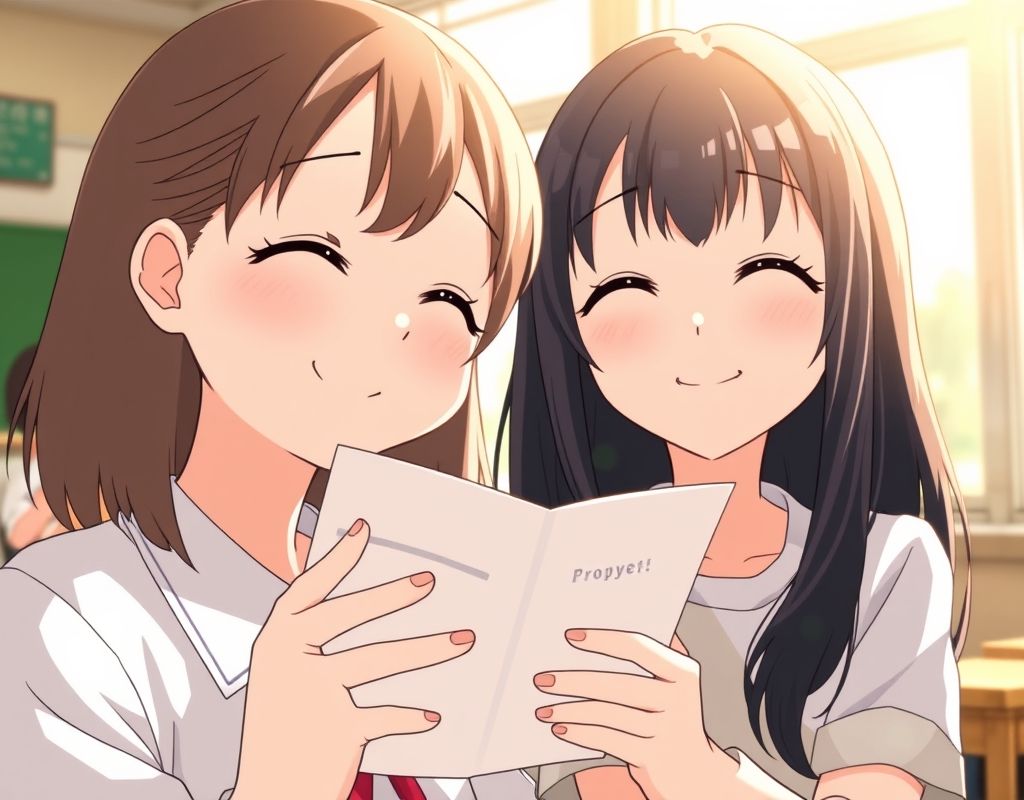
「Yokatta!」: The National Sigh of Relief
「Yokatta!」: The National Sigh of Relief 😮💨
Have you ever been in a situation where your heart was pounding with worry, and then suddenly everything was resolved and you just wanted to let out a cry? Or when you hear good news from a friend, you want to share their joy in the most sincere way?
In those moments, the Japanese have a 'magic' word that encapsulates all those emotions: 「よかった!」 (Yokatta!)
This isn't just 'That's great!' as textbooks often teach. It's a sigh of relief, a release of tension, a congratulation filled with empathy. Let's break it down!
1. 「Yokatta」≠「Ii ne」: The difference is in the 'worry that has passed' 🤔
This is the key to using this word like a native speaker. Both are positive, but their nuances are completely different.
-
「いいね!」(Ii ne!): Used to express approval, to praise something that is obviously good in the present or future.
Example: Your friend says:「明日、ディズニーランドに行くんだ!」(I'm going to Disneyland tomorrow!) You would reply:「へぇ、**いいね!**楽しんできてね!」(Oh, that's great! Have fun!)
-
「よかった!」(Yokatta!): Used when a good outcome appears after a situation with an element of uncertainty, worry, or negativity.
Example: Your friend is worried about the weather forecast:「明日のディズニー、雨かもしれない…」(It might rain for our Disneyland trip tomorrow...) The next morning, they report back:「天気予報、晴れに変わった!」(The weather forecast changed to sunny!) At this point, you would exclaim:「え、本当!? よかったね!」(Really?! That's great!/I'm so happy for you!)
See?「よかった」implies 'Phew, I was worried it wouldn't turn out this way'.
2. The Golden Nuances of「Yokatta」🎨
In conversation, you'll use「よかった」constantly in the following situations:
-
A sigh of relief for yourself 😌 When you solve a problem of your own.
Example:「あ、財布あった!電車に忘れたかと思った。よかった〜」 (Ah, my wallet! I thought I left it on the train. Thank goodness~)
-
Being happy for others (Most important!) 🥰 This is the master trick to show empathy. It shows that you have listened and shared their worries.
Example: When a sick friend tells you they've recovered. 「体調、もう大丈夫?」「うん、すっかり元気になったよ!」 「そうなんだ、**よかった!**本当に安心したよ。」 (Are you feeling better now? / Yep, I'm all better! / I see, that's great! I was really worried.)
-
When receiving help/permission ✅ When you ask for permission for something and it's granted.
Example:「この資料、明日まででも大丈夫ですか?」(Is it okay if I get this document to you by tomorrow?) 「うん、いいよ。」(Yeah, that's fine.) 「ありがとうございます!よかったです。」(Thank you! That's a relief.)
💡 Pro-tip:
- With close friends, adding「ね」or「じゃん」to the end sounds more natural: よかったね!, よかったじゃん!
- With superiors or in polite situations, use よかったです.
In conclusion,「よかった」is an emotional response. It not only acknowledges a good result, but also the uncertain process that came before it. Used at the right time, it will show that you are an extremely subtle communicator who knows how to connect with others. Next time you hear good news, don't just say「すごい」, try「よかったね!」and you'll see the difference immediately!
Thẻ liên quan:
Lan tỏa kiến thức
Chia sẻ những điều hay ho với bạn bè